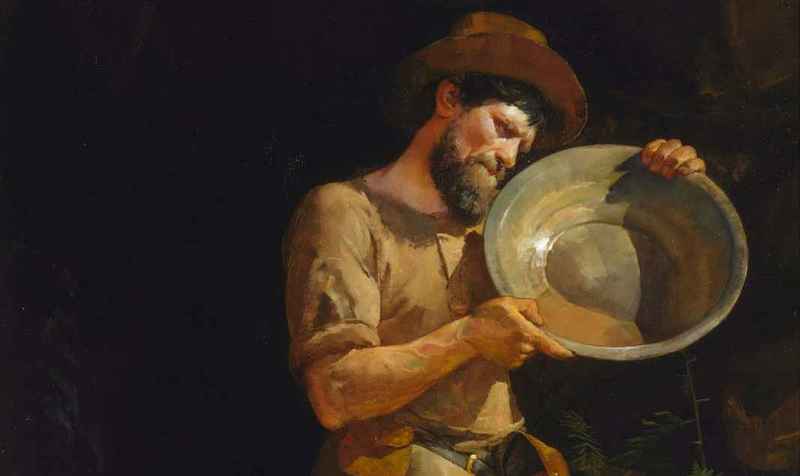Julian Rossi Ashton, art teacher and artist, was born on 27 January 1851 at Addelstone, Surrey, England, elder son of a wealthy American, Thomas Briggs Ashton, and his wife Henrietta, daughter of Count Carlo Rossi, a Sardinian diplomat. Ashton, Julian Rossi 1851-1942

In 1866 his father died, Julian had to leave school and start to work in the engineer’s office of a Railway Company. Melbourne newspaper owner offered him 300 pounds to come to Australia and work as an illustrator for the Illustrated Australian News.
He also worked for Melbourne-based Australasian Sketcher. He travelled extensively throughout Australia drawing points of interest; he also drew for the Bulletin.
In 1886 Ashton began to teach privately. In 1892-95 he conducted classes at the Art Society of New South Wales of which he had been president in 1887-92. In 1895 Ashton joined, the Society of Artists, Sydney. Sacked from his teaching position, he established his own school in King Street, moved it to the Queen Victoria Markets in 1906 and renamed it the Sydney Art School. In George Street from 1935 it became the Julian Ashton School. Among his students were George Lambert, Elioth Gruner, Jesse Hilder, Thea Proctor, Sydney Ure Smith, William Dobell, Jean Bellette and D. Dundas.
In 1889-99 Ashton was a trustee of the National Art Gallery of New South Wales and was responsible for patronage of local artists. He bought the first (Sir) Arthur Streeton for the gallery, ‘Still Glides the Stream and Shall Forever Glide’, in 1890 for 70 pounds.
Questions were asked in parliament about the number of his own paintings bought by the trustees; he had played no part in their selection. He organized the 1898 exhibition of Australian art in London at the Grafton Gallery.
In 1897-98 Ashton was president of the Society of Artists which in 1903 amalgamated with the Art Society of New South Wales to become the Royal Art Society of New South Wales. In 1907 he led a successful move to re-establish the Society of Artists, and was president until 1921 and vice-president until 1940, when he returned to the Royal Art Society.
Ashton was a well-established artist in both oils and water-colour. He was also known for his romantic figure-paintings.
View Julian Rossi Ashton Paintings
About 1914 his sight began to deteriorate, first with colour blindness (said to be yellow and blue) and later with a condition that severely limited his peripheral vision; this, in addition to his asthma, forced him to reduce his activities, although he remained vocal on art matters, particularly modernism, which he condemned for bad draftsmanship and poor craftsmanship. Awarded the Society of Artists’ medal for distinguished services to Australian art in 1924, he was appointed C.B.E. in 1930, and won the Sydney sesquicentenary prize for a water-colour in 1938. He published his reminiscences, Now Came Still Evening On, in 1941.
Ashton died on 27 April 1942 at Bondi, Sydney.